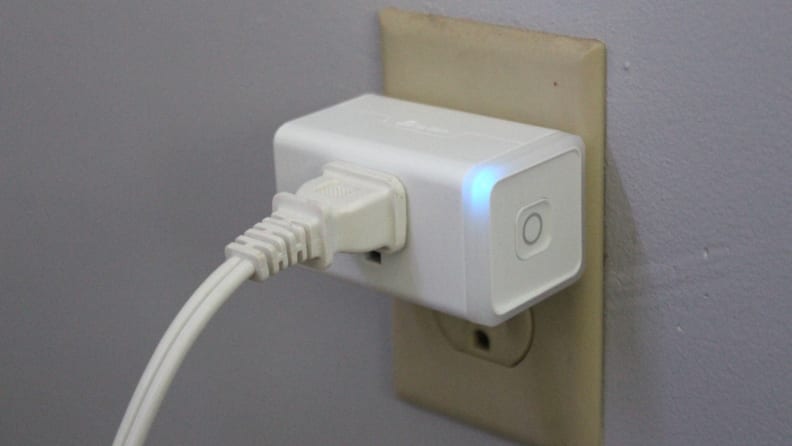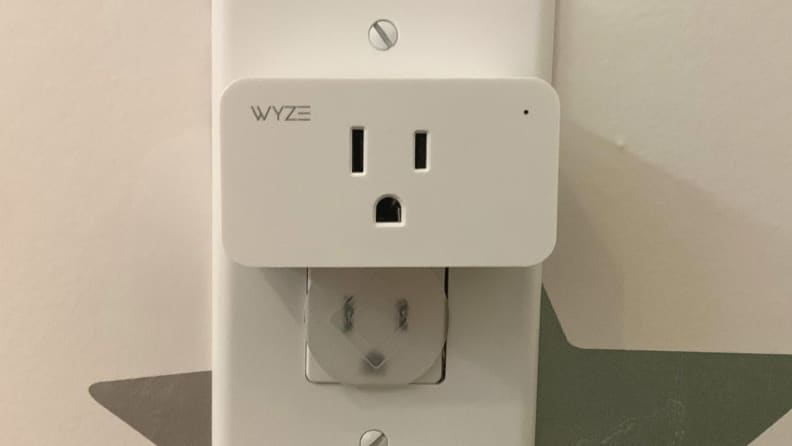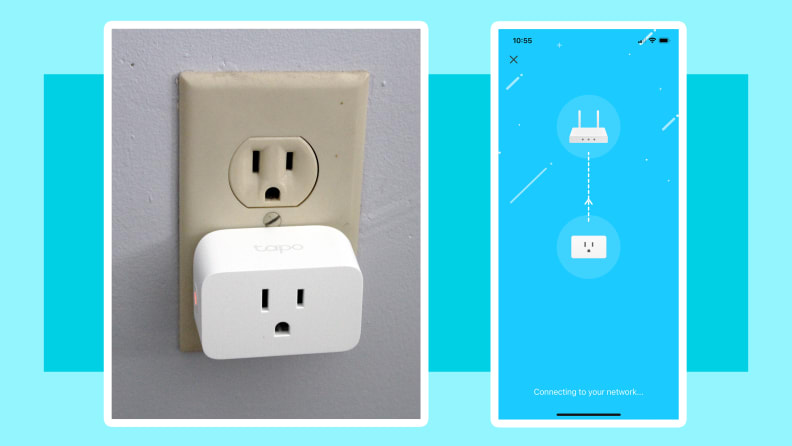Smart plugs are one of the easiest smart devices to use. These compact smart outlets fit into traditional wall sockets and can be installed in a matter of minutes, giving everything from your bedside lamps and living room TV to small appliances like dehumidifiers and coffee makers a new way to operate.
The best smart plug we’ve tested is the Kasa Matter Smart Plug with Energy Monitoring
(available at Amazon for $34.99)
. It offers a slim design, energy monitoring insights that go above and beyond, and supports Matter. For something cheaper, check out the Wyze Smart Plug (available at Amazon). However, there are many great smart plugs in our guide to choose from, depending on your needs.

Credit:
Reviewed / Camryn Rabideau

The Kasa Matter Smart Plug with Energy Monitoring is the best smart plug you can buy.

Credit:
Reviewed / Rachel Murphy

From data privacy to user security and reliability, the Wyze Smart Plug has everything a great smart plug should.
Other Smart Plugs We Tested
How We Test Smart Plugs
The Tester
Hi, I’m Rachel Murphy, Reviewed’s home editor. I live in a smart home that’s full of smart cameras, smart speakers, and more. During my tenure at Reviewed, I’ve tested video doorbells, smart coffee makers, and other gadgets that can be controlled remotely or via smart assistants such as Amazon Alexa and Google Assistant.
Testing in this guide was also completed by Camryn Rabideau, who has reviewed smart plugs, security cameras, and other connected devices.
The Tests

Credit:
Reviewed / Camryn Rabideau
We test the best smart plugs in real smart homes across the country.
Our tests start by setting up each plug using both Android and iOS, taking note of any difficulties in the installation process. Once up and running, we test each plug’s features like timers, scheduling, and vacation mode. We also look for plugs that support Matter and offer helpful insights like energy monitoring.
We also test the companion apps for other smart home integrations, reliability, range, and responsiveness.
We explore each app for security features like two-factor authentication and take into account what types of user data (and how much of it) the companion apps collect.
We test each plug over Wi-Fi, Thread, or Bluetooth, with hubs, when necessary, and over remote connections.
Finally, we judge each plug on its looks and ergonomics since you’re probably going to be looking at and interacting with these things for a long time to come.
What You Should Know About Smart Plugs
Compatibility
Whether you use Alexa, Google Assistant, or Siri, it’s important to make sure the smart plug you choose works with your preferred smart assistant. It may seem obvious, but not all plugs play nice with all assistants.
Many connected plugs work with both Alexa and Google Assistant, but that’s not always the case with Siri. To avoid any surprises or headaches, look for a smart plug that’s compatible with the smart assistant you use the most. Compatibility information can be found on the product’s page or the exterior of the product’s packaging.
We also recommend selecting a smart plug that supports Matter, a new smart home protocol that you connect all supported devices to all supported systems—meaning you no longer have to worry about finding only the devices that support your ecosystem. However, since the protocol is fairly new, many smart plugs do not yet support Matter, so read closely.
Energy monitoring
These connected outlets can do more than give you remote and voice control for your not-so-smart devices—many can also monitor how much energy your connected devices are using. These details can usually be found in the smart plug’s companion app and will tell you how many kilowatts the smart plug is using each hour, day, month, or year.
While energy monitoring isn’t a make or break feature and it won’t impact your ability to use a smart plug, it can help give you a clearer picture of how much energy your connected devices are using and help you identify areas to reduce your energy consumption. This may save you money on your monthly electric bill and help you develop more energy-efficient habits at home.
Design
Smart plugs come in all shapes and sizes. Before you buy one, consider where you want to put it.
A slender, rectangular plug likely won’t block the second outlet on a wall panel, no matter where you plug it in. Most of these smart plugs are meant for indoor use only, but outdoor smart plugs are an option, too.
Privacy
There’s always a potential privacy risk involved when you use internet-connected devices at home. To help safeguard your smart home, there are some steps you can take. First, look for devices that offer two-factor authentication, which sends a code to your mobile device to verify it’s you. That way, if someone tries to hack into your account, you will receive an alert and can quickly take care of the problem. Many devices also allow you to activate email or other push notifications in the settings to alert you if someone has logged on.
Additionally, make sure to use a unique, strong password composed of multiple characters, numbers, and letters for each of your smart home accounts. Data breaches feel like the norm as of late, making it all the more important to use different passwords across multiple websites and apps.
When using any devices with smart assistants like Alexa, Google Assistant, and Siri, you can further protect your privacy by regularly deleting your voice recordings and muting the speaker’s mic when it’s not in use.
Looking for more privacy tips? Read our guide to securing your smart home.












